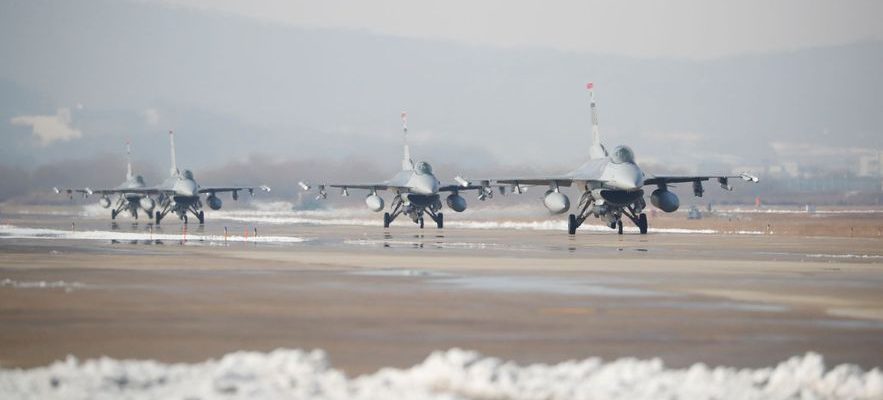Once again, Poland is positioned at the forefront of military aid to Ukraine. It was among the first countries to supply Soviet-made tanks to Kiev, several months before Germany gave the green light for its Leopard 2s. Here it is again playing the pioneers with the announcement, on March 16 , of an upcoming delivery of four Mig-29, a Soviet combat aircraft also used by the Ukrainian army. And the next day, Slovakia announced that it would give up all those it owns, ie 13 models recently withdrawn from service.
For Ukraine, this is a political turning point. Never, until then, had the West dared to provide it with combat planes, for fear of an escalation with Moscow. The gesture of the Poles and the Slovaks therefore constitutes a favorable precedent for kyiv to receive others. The interest is also military: “This allows Ukraine to reconstitute a mass of maneuver at the air level, after substantial losses in recent months”, underlines Yohann Michel, researcher on defense issues at the International Institute for Strategic Studies (IISS).
Since the start of the war, Ukraine has lost around 60 aircraft, according to the documented census of the Oryx site, including 18 Mig-29s. It is not a model of its first youth, entered into service in the 1980s, but it allows Kiev to ensure the defense of its airspace despite the superiority in number and quality of aircraft in Moscow. This warplane has also been adapted in recent months to fire Western anti-radar air-to-ground missiles, such as the American AGM-88 HARMs, and no longer only to use Soviet armaments.
The four Polish Mig-29s, “fully operational” according to President Andrzej Duda, will be transferred “in the days to come”. Others may follow in the coming weeks or months. Warsaw currently has 28 Mig-29s, to be replaced by American F-35s and FA-50s from South Korea. Among the thirteen Slovak aircraft, at least three will be used quickly as spare parts carriers for the Ukrainian fleet. Within NATO, only one other country still flies Mig-29s: Bulgaria. She has 14, according to the IISS.
Faced with the anti-aircraft defenses of the Russian army, whose fleet has been rather preserved, these shipments will not constitute a strategic turning point. “The delivery of equipment, a fortiori that Ukraine already possessed, does not in itself represent a break in the way the war is conducted, but it will make it possible to prolong the fight at a satisfactory level.”
US F-16s during a joint military exercise with South Korea on December 6, 2017 at Osan Air Base, Pyeongtaek.
© / afp.com/KIM HONG-JI
Ukrainian Air Force spokesman Yuriy Ignat said the “Migs will help strengthen our capabilities”. But he at the same time indicated that they “will not solve our problems, we need American F-16s”. Despite Warsaw’s announcement, Washington recalled that such a delivery was “not on the table”, as US President Joe Biden himself has already specified.
However, the past year has shown that arms deliveries are always made in stages and in stages. “The logic could be the same as for the tanks: first the delivery to Ukraine of equipment on which its soldiers have already been trained, even if the standards may vary from one country to another, before provide Western equipment, points out Yohann Michel. But it takes more time to master a new plane than a new tank.”
Westerners are aware of this. The United Kingdom has thus announced the next training of Ukrainian fighter pilots “to NATO standards”. On the side of Paris, the French Minister of the Armed Forces, Sébastien Lecornu indicated that discussions were underway on the question. The United States, for its part, is training at least two Ukrainian pilots on the F-16. According CNNthis training will determine the time needed for pilots sent by kyiv to master the F-16, the most used fighter plane in the world.
